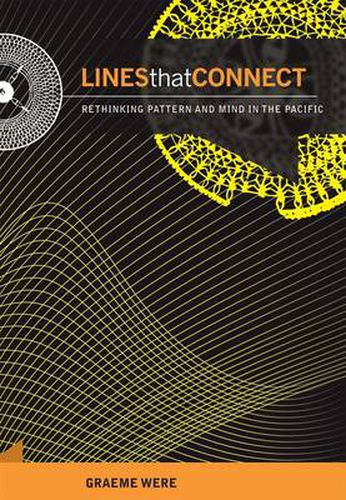Readings Newsletter
Become a Readings Member to make your shopping experience even easier.
Sign in or sign up for free!
You’re not far away from qualifying for FREE standard shipping within Australia
You’ve qualified for FREE standard shipping within Australia
The cart is loading…






Building on historical and contemporary literature in anthropology and art theory,
Lines That Connect
treats pattern as a material form of thought that provokes connections between disparate things through processes of resemblance, memory, and transformation. Pattern is constantly in a state of motion as it traverses spatial and temporal divides and acts as an endless source for innovation through its inherent transformability. Graeme Were argues that it is the ideas carried by pattern’s relational capacity that allows Pacific islanders to express their links to land, genealogy, and resources in the most economic ways. In doing so, his book is a timely and unique contribution to the analysis of pattern and decorative art in the Pacific amid growing debates in anthropology and art history. This striking and original study brings together objects and photographs, historical literature and contemporary ethnographic case studies to explore pattern in its logical workings. It presents the first-ever analysis of the well-known patterned shell valuable called kapkap as revealed in New Ireland mortuary feasts. Innovative research in the study of Christianity and the Baha'i faithful in the region shows how pattern has been appropriated in new religious communities. Were argues that pattern is used in various guises in performances, church architecture, and funerary images to contrasting effect. He explores the conditions under which pattern facilitates a connecting of old and new ideas and how missionary processes are implicated in this flow. He then considers the mechanisms under which pattern is internalized, paying particular attention to its embeddedness in spatial and numerical thinking. Finally, he examines how pattern carries new materials and technologies, which in turn provide new resources for sustaining old beliefs. Drawing on a multitude of fields (anthropology; art history; Pacific, museum, and religious studies; education; ethnomathematics),
Lines That Connect
raises key questions about the capacity of pattern across the Pacific to bind and sustain ideas about place, body, and genealogy in the most logical of ways.
$9.00 standard shipping within Australia
FREE standard shipping within Australia for orders over $100.00
Express & International shipping calculated at checkout
Building on historical and contemporary literature in anthropology and art theory,
Lines That Connect
treats pattern as a material form of thought that provokes connections between disparate things through processes of resemblance, memory, and transformation. Pattern is constantly in a state of motion as it traverses spatial and temporal divides and acts as an endless source for innovation through its inherent transformability. Graeme Were argues that it is the ideas carried by pattern’s relational capacity that allows Pacific islanders to express their links to land, genealogy, and resources in the most economic ways. In doing so, his book is a timely and unique contribution to the analysis of pattern and decorative art in the Pacific amid growing debates in anthropology and art history. This striking and original study brings together objects and photographs, historical literature and contemporary ethnographic case studies to explore pattern in its logical workings. It presents the first-ever analysis of the well-known patterned shell valuable called kapkap as revealed in New Ireland mortuary feasts. Innovative research in the study of Christianity and the Baha'i faithful in the region shows how pattern has been appropriated in new religious communities. Were argues that pattern is used in various guises in performances, church architecture, and funerary images to contrasting effect. He explores the conditions under which pattern facilitates a connecting of old and new ideas and how missionary processes are implicated in this flow. He then considers the mechanisms under which pattern is internalized, paying particular attention to its embeddedness in spatial and numerical thinking. Finally, he examines how pattern carries new materials and technologies, which in turn provide new resources for sustaining old beliefs. Drawing on a multitude of fields (anthropology; art history; Pacific, museum, and religious studies; education; ethnomathematics),
Lines That Connect
raises key questions about the capacity of pattern across the Pacific to bind and sustain ideas about place, body, and genealogy in the most logical of ways.